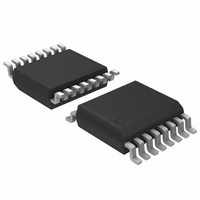ADT7473ARQZ-1RL ON Semiconductor, ADT7473ARQZ-1RL Datasheet - Page 49

ADT7473ARQZ-1RL
Manufacturer Part Number
ADT7473ARQZ-1RL
Description
IC REMOTE THERMAL CTLR 16QSOP
Manufacturer
ON Semiconductor
Series
dBCool®r
Datasheet
1.ADT7473ARQZ-1RL.pdf
(74 pages)
Specifications of ADT7473ARQZ-1RL
Function
Fan Control, Temp Monitor
Topology
ADC, Comparator, Fan Speed Counter, Multiplexer, Register Bank
Sensor Type
External & Internal
Sensing Temperature
-40°C ~ 125°C, External Sensor
Output Type
SMBus™
Output Alarm
No
Output Fan
Yes
Voltage - Supply
3 V ~ 3.6 V
Operating Temperature
-40°C ~ 125°C
Mounting Type
Surface Mount
Package / Case
16-QSOP
Full Temp Accuracy
+/- 0.5 C
Digital Output - Bus Interface
Serial (3-Wire, 4-Wire)
Maximum Operating Temperature
+ 125 C
Minimum Operating Temperature
- 40 C
Lead Free Status / RoHS Status
Lead free / RoHS Compliant
Available stocks
Company
Part Number
Manufacturer
Quantity
Price
Company:
Part Number:
ADT7473ARQZ-1RL
Manufacturer:
ON Semiconductor
Quantity:
1 750
Part Number:
ADT7473ARQZ-1RL
Manufacturer:
ON/安森美
Quantity:
20 000
solution, the engineer can adjust the system acoustics. The
goal is to implement a system that is acoustically pleasing
without causing user annoyance due to fan cycling. It is
important to realize that although a system might pass an
acoustic noise requirement specification (for example,
36 dB), if the fan is annoying, it fails the consumer test.
Approaches to System Acoustic Enhancement
system acoustic enhancement: temperature−centric and
fan−centric.
transient temperatures as they are measured by a
temperature source (for example, Remote 1 temperature).
The temperature values used to calculate the PWM duty
enhancement controls the PWM duty cycle, driving the fan
at a fixed rate (for example, 6%). Each time the PWM duty
cycle is updated, it is incremented by a fixed 6%. As a result,
the fan ramps smoothly to its newly calculated speed. If the
temperature starts to drop, the PWM duty cycle immediately
decreases by 6% at every update. Therefore, the fan ramps
smoothly up or down without inherent system delay.
Consider, for example, controlling the same CPU cooler fan
(on PWM1) and chassis fan (on PWM2) using Remote 1
temperature. The T
been defined in automatic fan speed control mode, that is,
thermal characterization of the control loop has been
optimized. Here, the chassis fan is noisier than the CPU
cooling fan. Using the fan−centric approach, PWM2 can be
There are two different approaches to implementing
The temperature−centric approach involves smoothing
The
Figure 74. Acoustic Enhancement Smoothes Fan Speed Variations Under Automatic Fan Speed Control
fan−centric
MIN
approach
and T
RANGE
to
settings have already
system
acoustic
http://onsemi.com
49
cycle values are smoothed, reducing fan speed variation.
However, this approach causes an inherent delay in updating
fan speed and causes the thermal characteristics of the
system to change. It also causes the system fans to stay on
longer than necessary because the fan’s reaction is merely
delayed. The user has no control over noise from different
fans driven by the same temperature source. Consider, for
example, a system in which control of a CPU cooler fan (on
PWM1) and a chassis fan (on PWM2) use Remote 1
temperature. Because the Remote 1 temperature is
smoothed, both fans are updated at exactly the same rate. If
the chassis fan is much louder than the CPU fan, there is no
way to improve its acoustics without changing the thermal
solution of the CPU cooling fan.
placed into acoustic enhancement mode independently of
PWM1. The acoustics of the chassis fan can, therefore, be
adjusted without affecting the acoustic behavior of the CPU
cooling fan, even though both fans are controlled by Remote
1 temperature. The fan−centric approach is how acoustic
enhancement works on the ADT7473/ADT7473−1.
Enabling Acoustic Enhancement for Each PWM
Output
Enhanced acoustics Register 1 (0x62)
Bit 3 = 1, enables acoustic enhancement on PWM1 output
Enhanced acoustics Register 2 (0x63)
Bit 7 = 1, enables acoustic enhancement on PWM2 output
Bit 3 = 1, enables acoustic enhancement on PWM3 output











